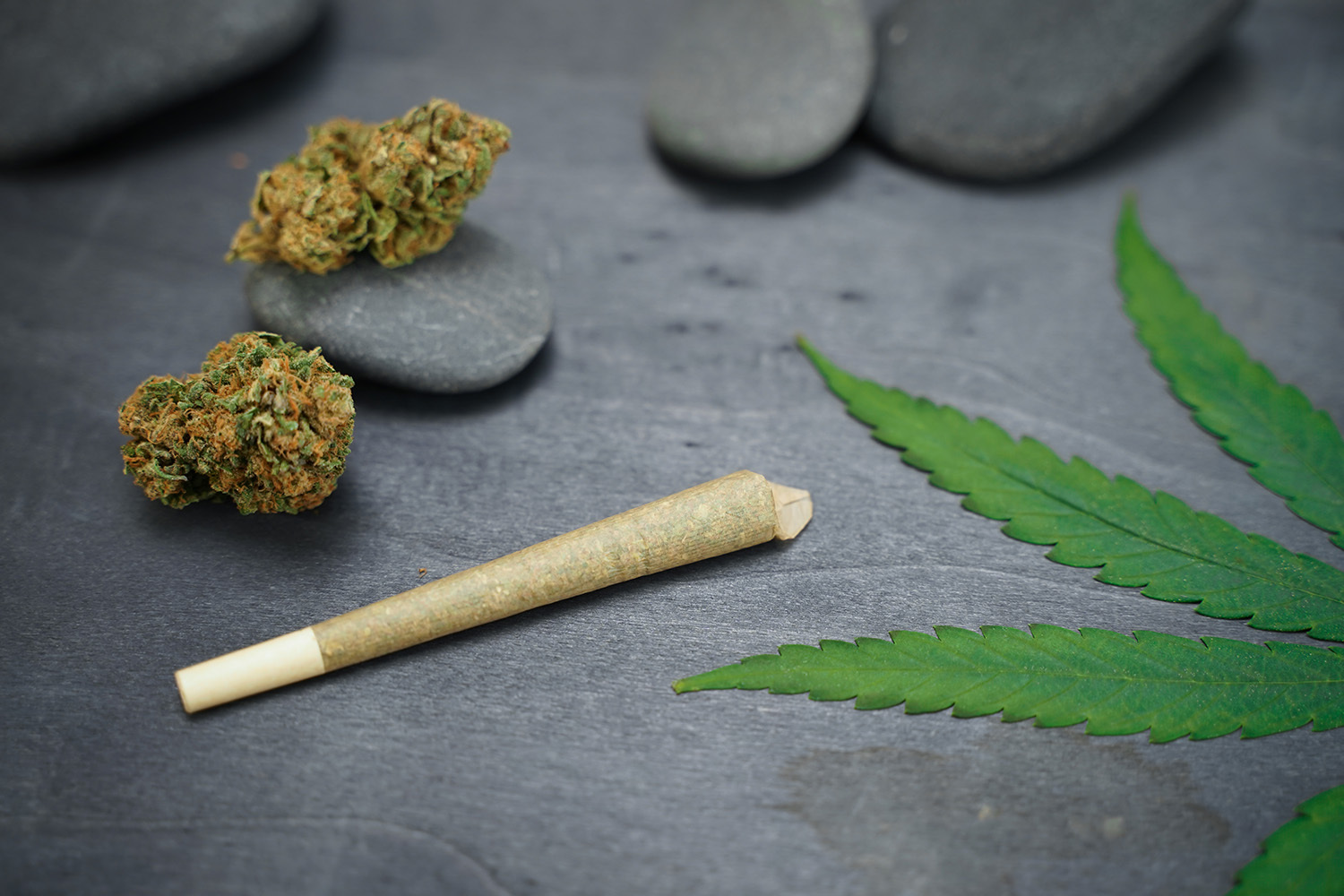The process of rolling and indulging in a skillfully made cannabis smoke is an essential component of culture and experience for many cannabis aficionados. The two most common cannabis smoking methods are joints and blunts, each of which provides a distinctive smoking experience. We’ll look at the main distinctions between joints and blunts in this post to help you decide which could better fit your tastes.
- Structure
The makeup of joints and blunts is one of the most obvious differences.
Joints:
Typically, ground cannabis flower is rolled in a small piece of white paper to create a joint. The paper often has no taste and might include glue to seal the junction. The outcome is a smoldering cylinder that is thin and predominantly green.
Blunts:
While making blunts, the tobacco from a cigar or cigarillo is removed and replaced with pulverized cannabis flower. Usually, tobacco leaves are used to create the outside wrapping, or “wrap,” of a blunt. Because of this, blunts have a distinctive flavor and scent that can differ greatly from that of joints.
- Aroma and Flavor
As was already established, the tobacco leaf wrapping gives blunts their distinct flavor and scent. The taste of the cannabis smoke is enriched, earthy, and just a little bit sweet thanks to the tobacco leaf. For some users, this flavor might improve the whole experience, but it might not be pleasant to individuals who don’t like tobacco or want a pure cannabis flavor.
On the other hand, joints have a simpler taste character. They allowed the cannabis strain’s organic tastes and terpenes to stand out. This may be advantageous for individuals who wish to appreciate the distinctive flavors of several strains.

- The Harshness and Quality of Smoke
The bitterness and purity of the smoke are two more noteworthy distinctions between joints and blunts.
Joints:
In comparison to blunts, joints often generate a smoother, softer smoke. This is so that neither nicotine nor any other substances contained in tobacco leaves are present in the paper used in joints. Smoking frequently seems cleaner and less harsh when there is no tobacco present.
Blunts:
Blunts can provide a thicker, more abrasive smoke because of their tobacco wrap. The throat impact and potency of cannabis and cigarettes together can be increased. This feature may be appealing to some users while being overpowering or frustrating to others.
- Rolling Techniques
A decent joint and a good blunt require separate sets of expertise to roll.
Joints:
Beginners typically find rolling a joint to be simpler. There are several methods and instruments to help with the procedure, and the rolling sheets are easily accessible. It is possible to learn how to roll a joint properly quite rapidly.
Blunts:
It might be more difficult to roll a blunt, especially if you’ve never used tobacco wraps before. It takes skill to empty and refill a cigar or cigarillo properly, and making blunts might take more time. However, many seasoned smokers value the ritual and skill connected to rolling and smoking blunts.

- Cultural and Social Aspects
Within the cannabis culture, both joints and blunts have specific social and cultural importance.
Joints:
With high potency often just include cannabis flower and no tobacco. As a result, the THC concentration per unit becomes more stable and predictable, making it simpler to regulate your dosage. Users may take advantage of the cannabis strain’s advantages without having to deal with tobacco’s possibly overbearing effects.
Blunts:
Because they include tobacco and cannabis, blunts have a varying potency. Because tobacco contains nicotine, it can intensify the psychoactive effects of cannabis, leading to a stronger high. But, especially for inexperienced users, this might also make it more difficult to assess and manage the intensity of the experience.
7. Smoke Duration
A standard joint may be smoked in a couple of minutes. Joints tend to burn rather rapidly. This is excellent for people who want shorter gaps between tokes or rapid sessions.
Joints burn faster than blunts, which have a longer burn period. When you want to enjoy the experience over a longer length of time or for extended smoking sessions with friends, a thicker cigar or cigarillo wrapper is a preferable option.
Considering your health
Joints:
Because they don’t include tobacco, joints are typically seen as a healthier alternative to blunts. While there are hazards involved with smoking any drug, avoiding tobacco decreases the possible harm brought on by nicotine usage.
Blunts:
Blunts introduce the health hazards connected to smoking tobacco products, such as nicotine addiction and an increased risk of respiratory problems, due to their tobacco content. When selecting blunts, users should be mindful of these possible health effects.
Conclusion
The decision between joints and blunts is mostly influenced by personal preference. Cannabis fans prefer joints because of their purer flavor and consistent potency. Blunts appeal to individuals who like the flavor profiles of cannabis and tobacco combined with their extended smoking time.
The decision between a joint and a blunt ultimately comes down to your own taste preferences, desired effects, and health considerations. Whatever your favorite technique, it’s important to consume cannabis carefully and to be aware of the possible hazards related to smoking.

Joints:
Joints are frequently thought of as the “traditional” form of cannabis smoking. In social situations, they are frequently shared amongst friends, and among cannabis aficionados they are frequently viewed as a sign of solidarity and brotherhood. Rolling ground cannabis flower in a thin sheet of paper commonly manufactured from hemp, rice, or wood pulp results in a joint, which is a cannabis cigarette. Typically, joints are slim and look and feel like normal cigarettes. They are a well-liked option for people who want a more covert smoking experience.
Blunts:
Blunts have a special cultural meaning of their own and are frequently related to hip-hop and urban culture. The act of smoking a blunt is considered to be a ritual, and they are commonly depicted in popular culture. Additionally, sharing a blunt with pals may strengthen friendships. Contrarily, blunts are created with cigar or cigarillo wrappers, which are frequently produced from tobacco leaves. Blunts get their distinctive taste and recognizable thickness from the tobacco wrapper. Before rolling, the cannabis is typically pulverized and combined with tobacco, producing a bigger, heavier smoking choice as opposed to joints.
Both joints and blunts are popular cannabis ingestion methods, and both have loyal followings. Personal preference eventually determines which of the two to choose. While blunts give a richer flavor profile and a distinctive social experience, joints offer a pure and clean cannabis experience. Whatever you decide, it’s important to use cannabis sensibly and in compliance with local laws and regulations.







